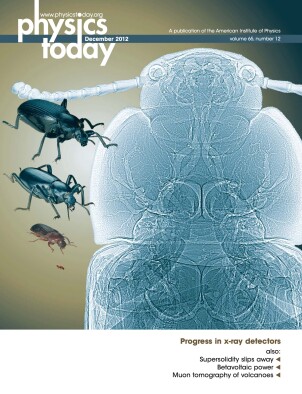The original evidence of supersolidity in helium-4 is explained away
DOI: 10.1063/PT.3.1809
Helium, the lightest of the noble gases, liquefies at 4.2 K. But because its interatomic attraction is so weak and its zero-point quantum fluctuation so large, it never solidifies at pressures less than 25 atmospheres. At 2.2 K, a fraction of liquid helium-4, the dominant isotope, becomes a superfluid; it flows without viscosity or frictional dissipation.
Around 1970, a number of theorists suggested that even solid 4He might exhibit superfluid-like behavior. Because lattice vacancies in crystalline 4He were thought to persist and remain mobile down to absolute zero, it was conjectured that they would condense into a coherent quantum state in which vacancies, and therefore the atoms whose absence they mark, would flow unhindered through the solid lattice.
Experimenters soon undertook searches for a small “supersolid” phase in solid 4He. But only in 2004 was there an apparently real sighting (see Physics Today, April 2004, page 21
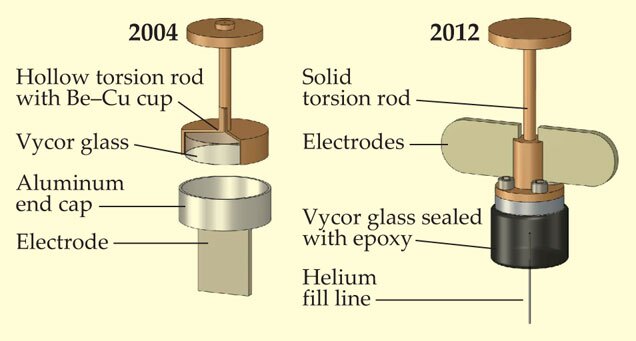
Figure 1. Torsion oscillators used in 2004 and 2012 experiments in Moses Chan’s laboratory.
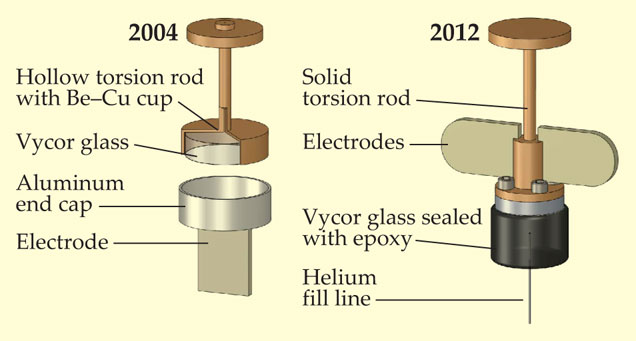
Chan and Kim tentatively interpreted the period drop as a decrease in the oscillating sample’s moment of inertia when about 1% of the solid 4He enters a supersolid phase and thus decouples from the oscillation. The result provoked considerable interest, numerous other experiments worldwide that also seemed to see the transition, and some skepticism. The skepticism grew after John Beamish and James Day at the University of Alberta discovered in 2007 that the shear modulus of bulk solid 4He increases substantially in precisely the temperature range where the supposed supersolid transition was being seen (see Physics Today, February 2008, page 14
That observed stiffening, an elastic effect with no suggestion of exotic quantum condensation, offered an alternative explanation of the TO results: The period falls not because the sample’s effective moment of inertia drops but rather because the effective torsion spring constant is increased by the abrupt stiffening of solid 4He adhering to the oscillator.
At first glance, however, that prosaic alternative applies only to TO experiments with bulk solid 4He samples. By contrast, the solid 4He in the original Kim–Chan experiment 1 and in some of the later experiments was frozen within the nanopores of Vycor, a porous glass through which only the superfluid component of liquid helium can flow freely. Chan had chosen to look first for supersolidity in Vycor because he thought its tiny, irregular pores might maximize the abundance of lattice vacancies. For much the same reason, solid 4He in Vycor should avoid the shear-modulus rise, whose mechanism involves the pinning of lattice dislocation lines much too long to fit in the pores.
But recently, careful analysis by Humphrey Maris at Brown University and numerical simulations by Chan’s group have suggested that the stiffening of even a very small amount of bulk solid 4He in the oscillator might account for all the anomalous period drops seen in Vycor experiments.
Now Chan and his postdoc Duk Kim report that they have repeated the 2004 “discovery” experiment with a new TO design 2 that avoids essentially all bulk solid 4He. This time the anomalous period drop below 200 mK was gone, and so, perhaps, is supersolidity. As Beamish puts it, “Though there are still some unresolved issues, the new Chan paper seems nearly to close the circle.”
Oscillators old and new
In a TO, one determines a sample’s moment of inertia I by measuring the resonant oscillation period when the sample is attached to an elastic torsion rod. The resonant period is given by
P = 2 π√
where k is the rod’s torsion spring constant. The ultralow-dissipation oscillator systems used in the 2004 and 2012 Penn State Vycor experiments (shown in figure 1) could detect temperature-dependent changes in the oscillators’ millisecond-scale resonant periods with subnanosecond resolution. The high pressure needed to freeze the 4He and keep it frozen is maintained in both experiments by sealed transfer and containment systems.
In Chan’s 2004 oscillator, the Vycor disk, about 1.5 cm in diameter, was glued into a covering beryllium–copper cup, which was then fitted into the aluminum end cap. But a very thin space had to be left between the top of the Vycor and the Be–Cu cover to allow infusion of liquid helium into the Vycor from the torsion rod’s hollow core, which served as a fill line.
Concerned that this space or other, inadvertent spaces in the assembly might have housed enough bulk solid 4He to stiffen the oscillator at 200 mK and thus raise its effective k, Chan and company chose what they call a “naked Vycor” design for the new experiment. They simply sealed the Vycor glass with epoxy. And the new torsion rod no longer has a hollow core to convey liquid helium. That function is replaced by a narrow fill line from below.
Figure 2 compares Chan’s old and new results. The abrupt 18-ns period drop seen in the old experiment as the sample was cooled below 200 mK is gone. The only surviving steep feature, the period drop as the system is cooled to 1 K, is fully explained by the freezing of the initially liquid 4He. The now very gradual period change below 1 K is accounted for by the stiffening of the Vycor itself. To facilitate comparison, period drops for all the curves in figure 2, with Vycor pores full or empty, use the period at 1 K as their zero reference.
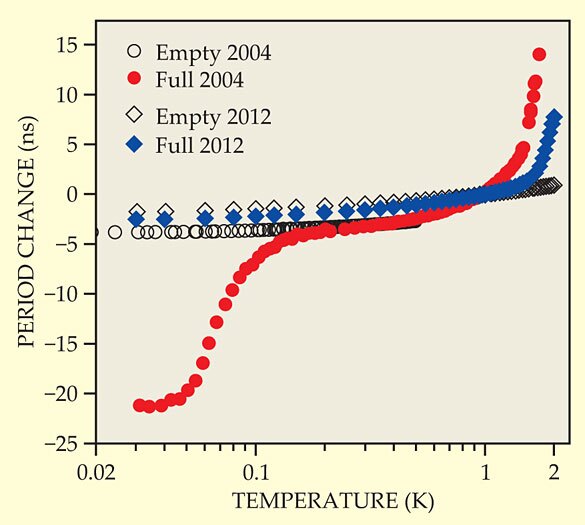
Figure 2. Changing resonant period of the torsion oscillators in figure
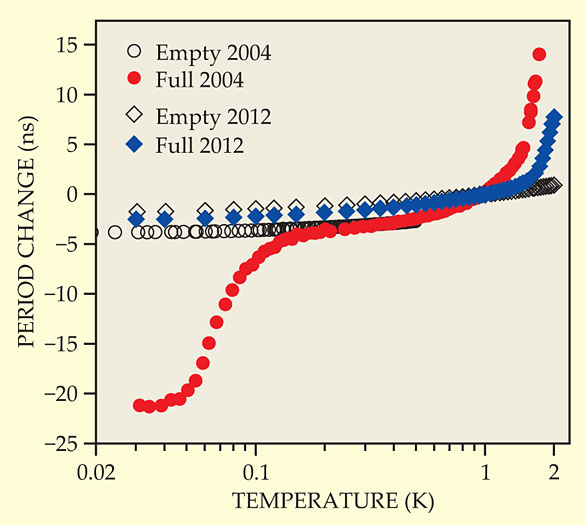
Based on their numerical simulations, Chan and company now attribute the period drop in the old data primarily to stiffening of the thin Be–Cu cover plate by an adhering solid 4He layer about 50 µm thick. “In the new experiment, we see no remnant of the evidence for supersolidity,” says Chan. “Playing detective has been interesting, but there are still loose ends to be resolved.”
Loose ends
In 2010 a team at the Korea Advanced Institute of Science and Technology led by Chan’s 2004 coauthor Eunseong Kim carried out a different sort of TO experiment, designed to distinguish evidence of supersolidity in bulk solid 4He from mere elastic stiffening. Velocity fields in supersolids, just as in superfluids, should be perfectly irrotational (curl free). Therefore, a steady “DC” rotation of the entire oscillator apparatus—at a few radians per second—should measurably affect a real transition to supersolidity but not simple material properties like a shear modulus.
And indeed, Kim’s team found a dependence of the oscillation-period drop on the rotation rate—and a lack of any such dependence in the shear modulus—that hints at transition to a supersolid phase. 3 New TO experiments with DC rotation are currently in the works.
Beyond the experimental confines of torsion oscillators, heat-capacity measurements carried out by the Penn State group raise issues still unresolved. In 2009 Chan and company found that the specific heat of bulk solid 4He peaks near 100 mK in a way that suggests a phase transition. 4 “We’re still investigating that,” says Chan. “If it’s not supersolidity, we’d like to know what it is.”
Robert Hallock and coworkers at the University of Massachusetts Amherst have undertaken experiments of a different kind in search of atom transport through bulk solid 4He. They attach reservoirs of superfluid 4He to opposite ends of a long block of solid 4He. Imposing a temperature difference between the reservoirs to create a chemical-potential difference, they look for evidence of resulting mass flow through the block.
The small mass flux observed in those experiments suggests that a network of edge dislocations in the 4He lattice provides one-dimensional superfluid cores for the transport of atoms through the solid. 5 “The relationship between the mass flux we seem to see and the torsion-oscillator results is unclear,” says Hallock. “Its dependence on the imposed chemical potential is quite different from what one would expect from the quantum condensation of lattice vacancies proposed in the 1970s.”
”Hallock’s mass flux is much too small to produce an observable period drop in the torsion-oscillator experiments,” says Chan. “And it happens at higher temperatures—around 600 mK. Maybe they’re seeing the real supersolidity transition that our experiments are not sensitive enough to notice.”
References
1. E. Kim, M. H. W. Chan, Nature 427, 225 (2004). https://doi.org/10.1038/nature02220
2. D. Y. Kim, M. H. W. Chan, Phys. Rev. Lett. 109, 155301 (2012). https://doi.org/10.1103/PhysRevLett.109.155301
3. H. Choi, D. Takahashi, K. Kono, E. Kim, Science 330, 1512 (2010). https://doi.org/10.1126/science.1196409
4. X. Lin, A. C. Clark, Z. G. Cheng, M. H. W. Chan, Phys. Rev. Lett. 102, 125302 (2009). https://doi.org/10.1103/PhysRevLett.102.125302
5. Y. Vekhov, R. B. Hallock, Phys. Rev. Lett. 109, 045303 (2012); https://doi.org/10.1103/PhysRevLett.109.045303
S. G. Söyler et al., Phys. Rev. Lett. 103, 175301 (2009). https://doi.org/10.1103/PhysRevLett.103.175301
